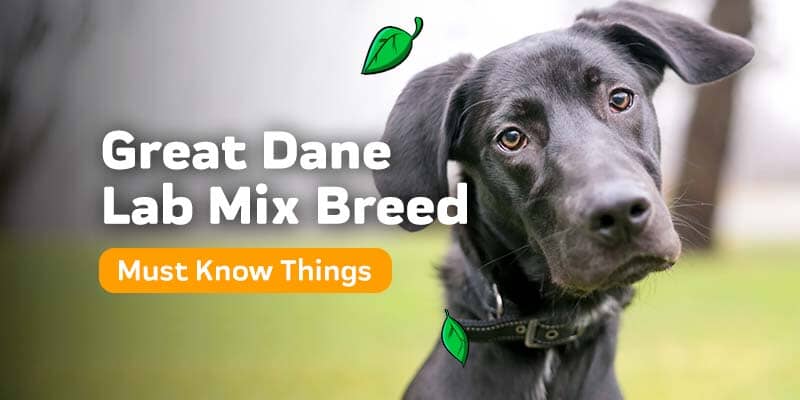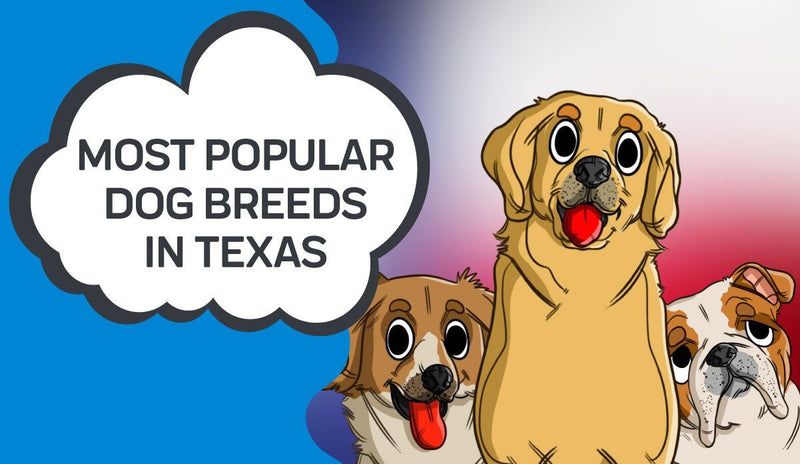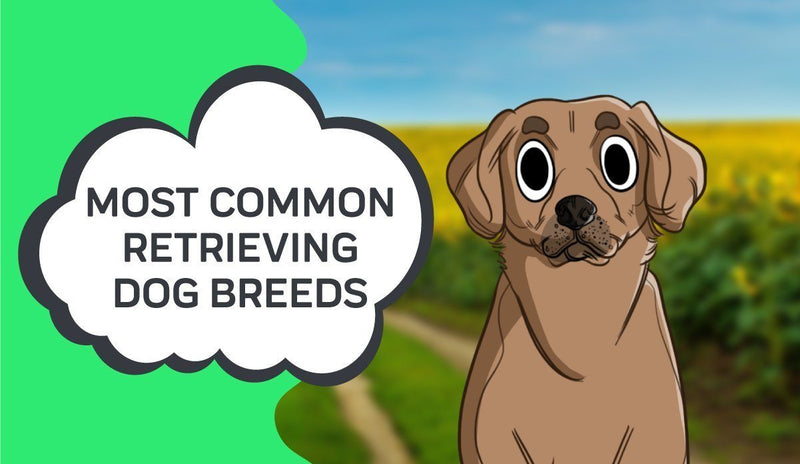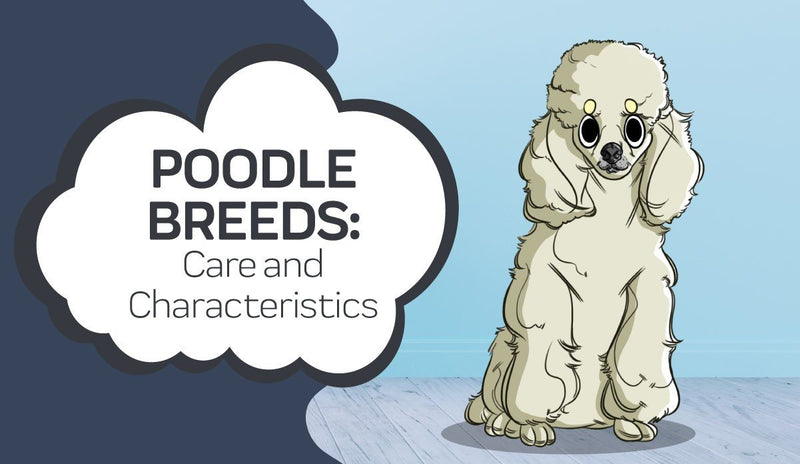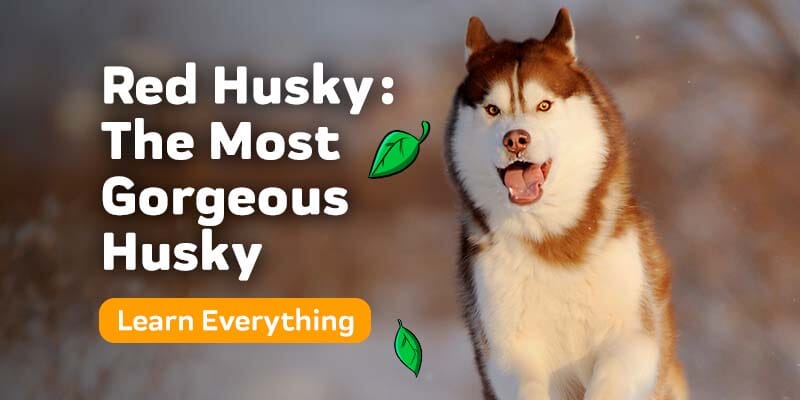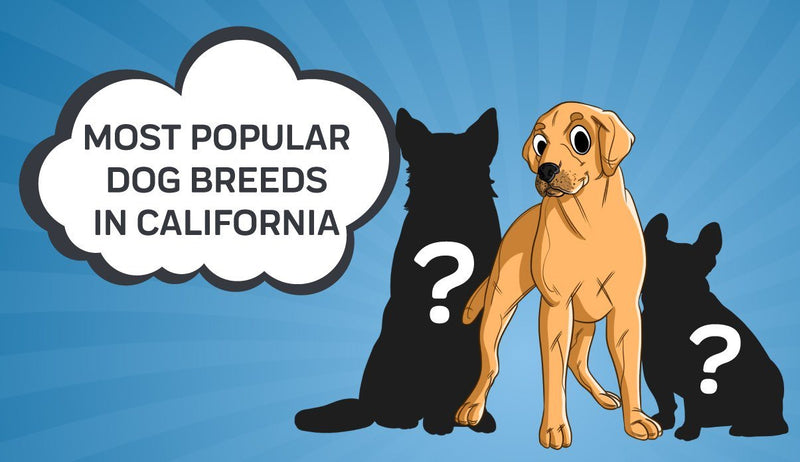Friendly, large, and energetic the Great Dane Labrador Retriever mix, also known as The Labradane, is an absolute unit of a dog. But don’t let their big size fool you because these big lugs are some of the sweetest, most gentle dogs around.
So is the Lab/Dane mix the right dog for you? Does their ginormous size make them a good fit for families? Today, let’s meet this incredible designer breed and find out.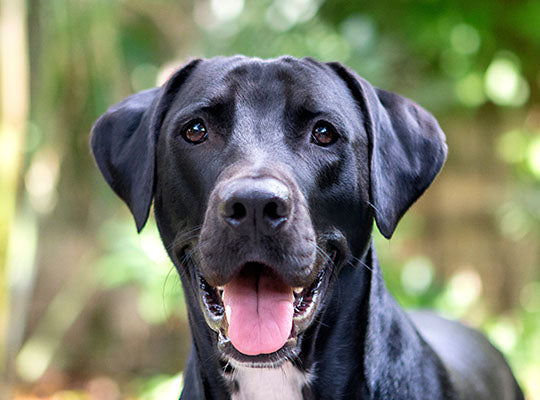
The Basics
Because the Labradane is part Lab and part Dane, it will likely display a mix of both parents traits. However, there is always a chance it could favor one of the other parents more.
For example, Labs usually don’t get taller than 25in at the shoulder, Great Danes, on the other hand, can hit 32in. Most Labradane will likely fall between 25-30 in, but this won’t always be the case, and there are Lab/Dane mixes that have hit over 30in. So keep that in mind when you look at the stats chart below.
|
Personality / Temperament |
Gentle, Sweet, Smart, and Loyal |
|
Feeding |
High |
|
Colors |
Black, Fawn, Yellow, Cholate, White |
|
Height |
25-30 in |
|
Weight |
100+ |
|
Lifespan |
8-12 Years |
History
The Great Dane was first bred to hunt wild boars at the turn of the 17th century in Germany. But the Great Dane gentle nature quickly took over and by the end of the century, they were more popular among royalty where they received endless pampering. If we go all the way back to 3,000 BC and 2,000 BC, we find drawings and pictures of a similar-looking dog in both Egypt and Babylonian respectively.
The Labrador Retriever is a newer breed compared to the Great Dane with early reports showing the Lab popped up sometime during the 18 or 19th century. At that time, they were called the St. John’s dog. The Labrador Retriever takes it name from Labrador, Newfoundland.
So what about the history of the Lab Dane mix? Well, we don’t really know much as there is little information. As well, there have been several dozen new hybrid mixes created in the last two decades due to the designer breed craze.
Appearance
Like many designers breeds the appearance of The Labradane can vary with some looking just like the Great Dane, others like the Lab. However, the majority will dawn a unique blend of the two.
Both parents are larger dogs, with the Great Dane being particularly tall, so you can count on their puppies being big and most likely weighing around 100lbs. As well, with both dogs having genes for a black coat, the majority of Labradanes have a short and silky obsidian coat.
However, since Labradane puppies can take either side of their parents’ genetic makeup, and come out looking like one over the other, let’s go over what both the Lab and Great Dane look like.
Labrador Retriver’s Appearance
A medium-large to large dog, the Labrador Retriever stands between 22 to 25 inches and weighs between 55 to 80lbs depending on the sex.
They have large block-shaped heads that sit on an equally bulky body.
The AKC recognizes three coat colors: yellow, chocolate, and black, but sometimes you will see coats that are more red, white, or sliver. Their coat is short, but dense due to its double layer.
Great Dane’s Appearance
A large to a giant dog, the Great Dane stands between 28 to 32 inches tall and can weigh anywhere from 100 to near 200lbs.
They have a large block-shaped head like the Labrador, but unlike them, they have a very lean and hard body with a big chest that slopes into a tight stomach. Oh, and they also have those incredibly long legs that define their appearance.
Their ears naturally hang flat against their face like the Lab, and when you see one with their ears pointed up, it’s usually due to someone cropping their eyes to stand upright.
The AKC recognizes six varieties of coat colors: fawn, brindle, harlequin, black, mantle, and blue. The Great Dane can come in several colors not recognized by show arenas, however: white, fawnequin, brindlequin, merle, merlequin, blue merle, chocolate, and fawn mantle.
Temperament
Both the Great Dane and the Labrador Retriever are known for their intelligent, loyal, and friendly nature. The Great Dane is often called a gentle giant, and the Labrador is easily one of the best family dogs around.
The biggest difference in temperament is the Lab loves to run and be active while the Great Dane prefers to relax. Now, Great Dane puppies are very active, but this naturally goes away with age, as well, hyperactivity is discouraged because it puts their rapidly growing bones at risk.
All-and-all, the Labradane is a designer dog whose personality is easier to predict because the Lab and Dane share so many traits.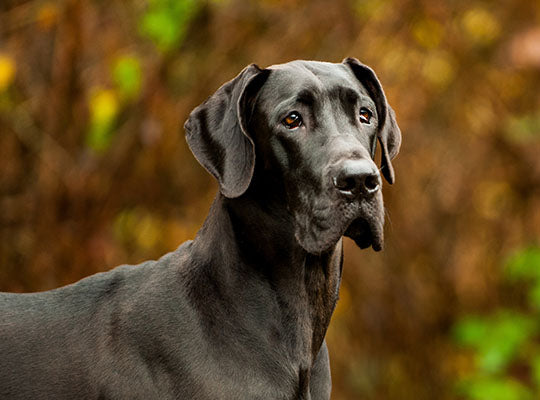
Lifespan
Lifespan can really vary with designer dogs making it hard to predict how long your Labradane will live for. Unfortunately, Great Danes have a very short lifespan with most only living between 6-8 years.
The Labrador Retriever, on the other hand, typically lives between 10-14 years. The Lab/Dane’s mix lifespan will likely fall in between.
Health
A Labradane puppy can inherit genetic diseases from both sides, which increases the number of health conditions they are prone to. On the bright side, they have better genetic diversity than their parents, and this is the key to avoiding inherited health conditions. Essentially, genetic diversity helps good genomes block bad genomes from expressing themselves.
As such, mutts like the Lab/Dane mix are slightly heather on average than purebreds because of this.
When it comes to the Labradane’s health overall, the biggest concern is mobility issues like hip dysplasia as both breeds are prone to them. 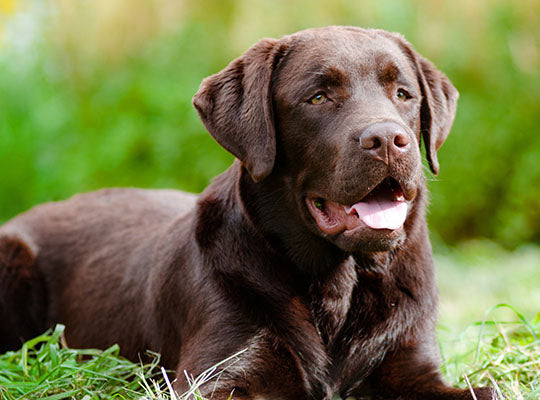
The Labrador Retriever’s Health
The Labrador is overall a moderately healthy dog. Their biggest fight is often with obesity, which puts them at risk for several health conditions.
So when you look at the long list below, know that obesity plays in factor in many.
- Patellar luxation
- Canine hip dysplasia (CHD)
- Osteochondritis dissecans (OCD) or elbow and shoulder dysplasia
- Distichiasis
- Exercise-induced collapse
- Diabetes
- Muscular dystrophy
- Tricuspid valve dysplasia
- Entropion
The Great Dane’s Health
The biggest health concern with Great Dane occurs in their first year due to the rapid growth they go through. The larger the dog, the more important their diet is because they rely on getting a certain set of minerals and vitamins to help with all the rapid bone development.
There room for error with a small dog’s diet because they don’t grow fast, this isn’t the case with a giant like the Great Dane. As such, hip & joint issues due to improper bones formation are some of the most common issues these dogs face.
- Arthritis
- Gastric Torsion
- Hip Dysplasia
- Cardiomyopathy
- Tricuspid Valve Disease
- Cancer
- Dilated Cardiomyopathy
- Hypothyroidism
- Wobbler Syndrome (spine-related issues, including cervical spondylomyelopathy (CSM), cervical vertebral instability, and cervical vertebral malformation-malarticulation)
Grooming
Should we start with the good news first or the bad? Let’s do the bad!
Despite a short coat, the Labrador is a big shedder. You can thank that water-resistant and insulating double coat for that. Labs need frequent brushing, and when it’s shedding season, you're looking at multiple grooming sessions a week.
On to the good news, which is the Great Dane is a very mild shedder thanks to their slinky single coat. So whether your Labradane will shed a lot or not is hard to say.
You’ll definitely need to keep a watch on your Lab/Dane mix’s ears, as both the Great Dane and Labrador have floppy ears made for trapping in dirt and bacteria.
We recommend you always have an ear cleaner on hand, which you can find in our store. 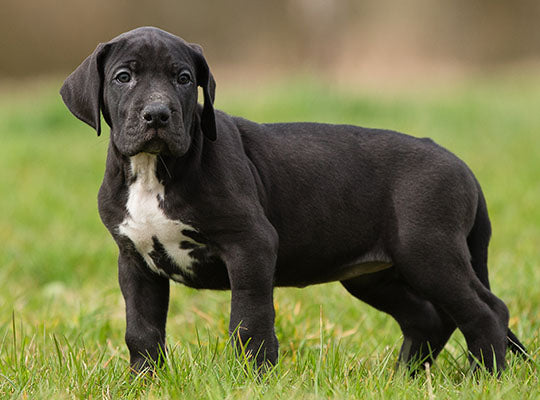
Exercise Needs
Exercising the Labrador-Great Dane mix can be tricky. Labs need an abundance of exercise because they are prone to putting on fat and overeating. Great Danes don’t need anywhere near the same amount of exercising, which is good because extensive exercising is often discouraged for the first two years due to their bones rapidly growing.
We recommend talking to your veterinarian who can monitor their growth and better asses how much exercise your pup needs.
Training
Training the Labradane is fairly easy as they are both loyal and intelligent same as the pitbull lab mix. The biggest training hurdle is getting them to settle down when there is excitement going on.
You’ll want to teach them to mind their enormous size as they aren’t naturally great at it and can easily knock down kids and people when jumping up to greet them.
Where To Find
Whenever we can, we really recommend that you adopt a dog from a rescue or shelter, but we understand there are times this isn’t possible.
While it likely won’t be an easy search as there are currently no Labradane adoption rescues, we recommend you look at breed-specific rescues that specialize in rescuing either Great Danes or Labrador Retrievers. The Lab has been the most popular dog for years now, and this has resulted in a lot of Lab mutts. This means finding a Labradane isn’t as difficult as finding other designer breeds.
If you simply want a dog similar to the Labradane, it can be a smart idea to just look for either Great Dane mixes or Labrador Retriever Mixes.
If you’re looking to purchase a Labradane, expect to pay a good bit due to their designer origins.
Image Credit: thehappypuppysite.com
Sources:
LabradaneLabradane
Labradane
Great Dane Lab Mix Bread
Adorable and Enthusiastic
LABRADANE










